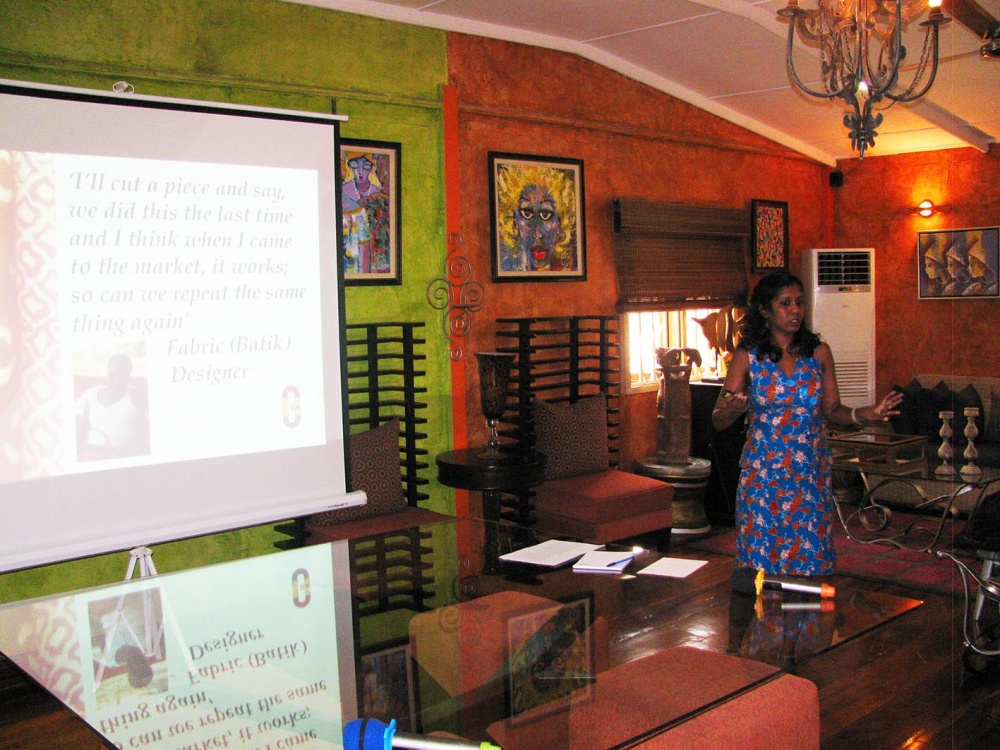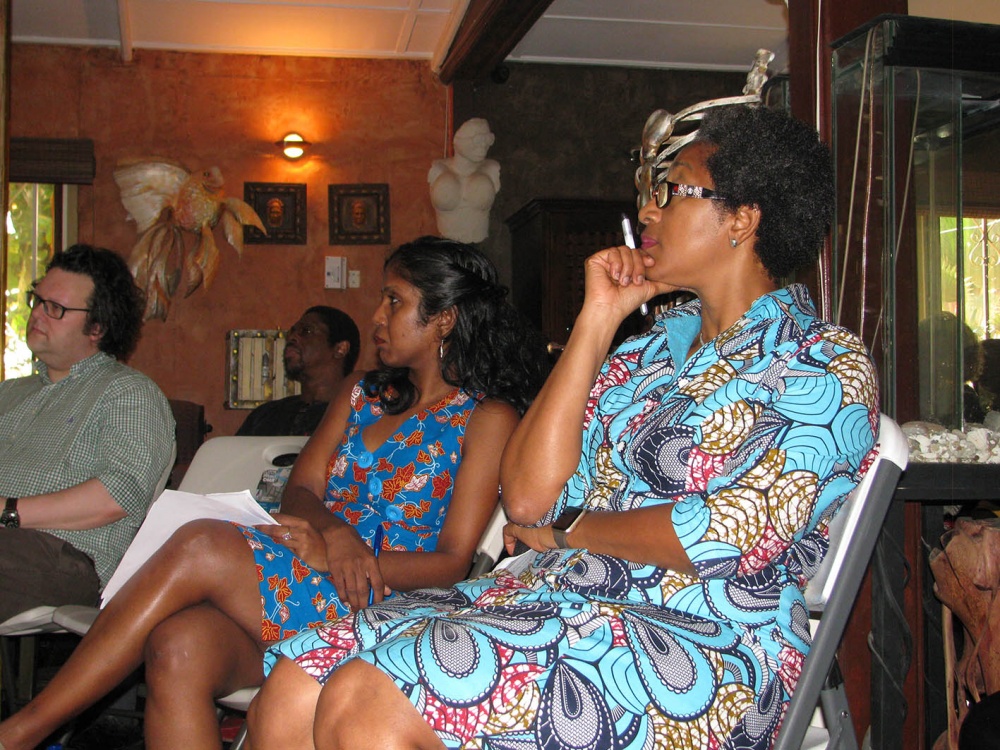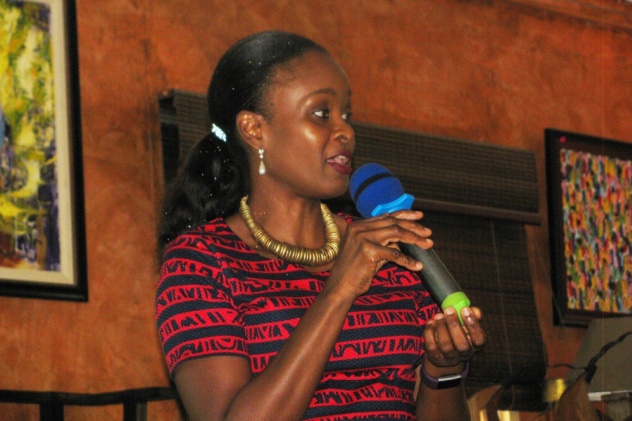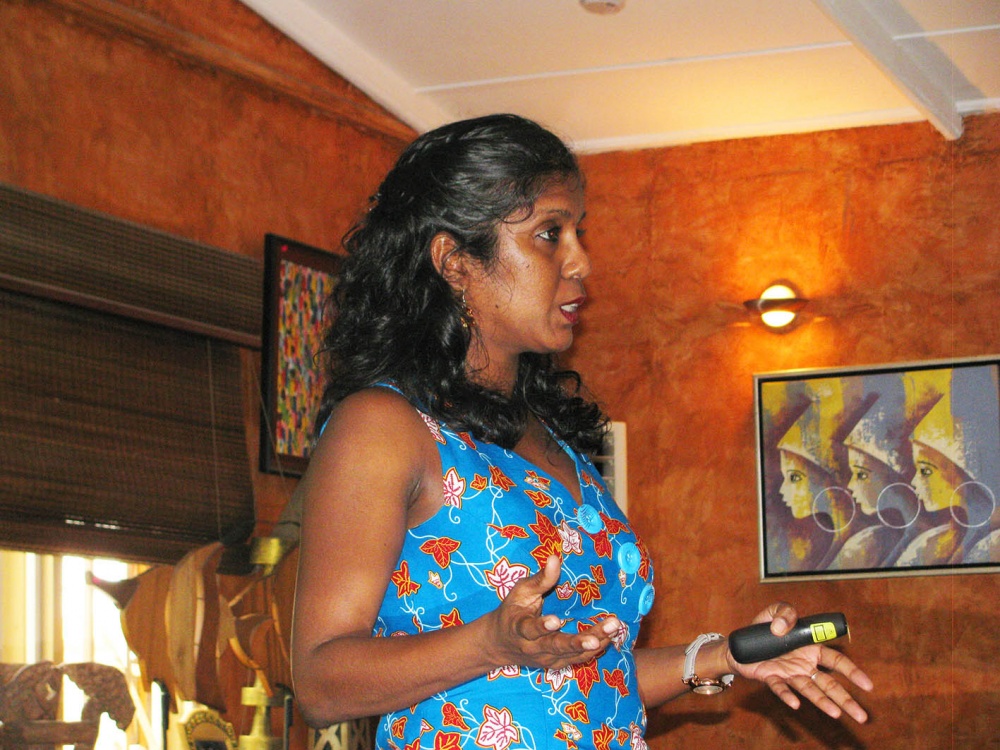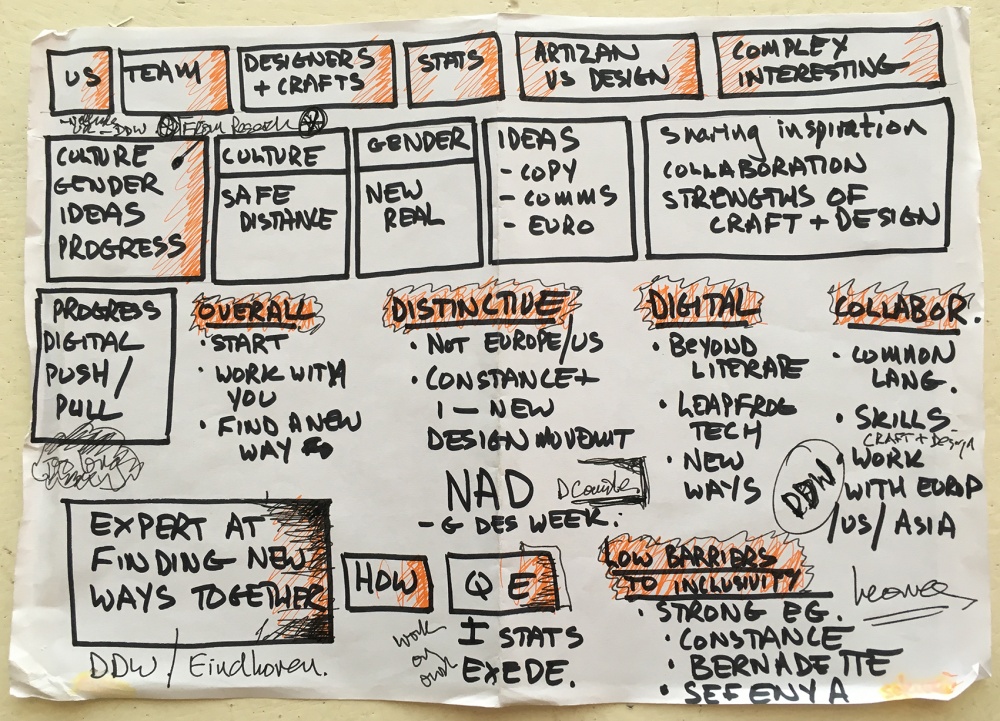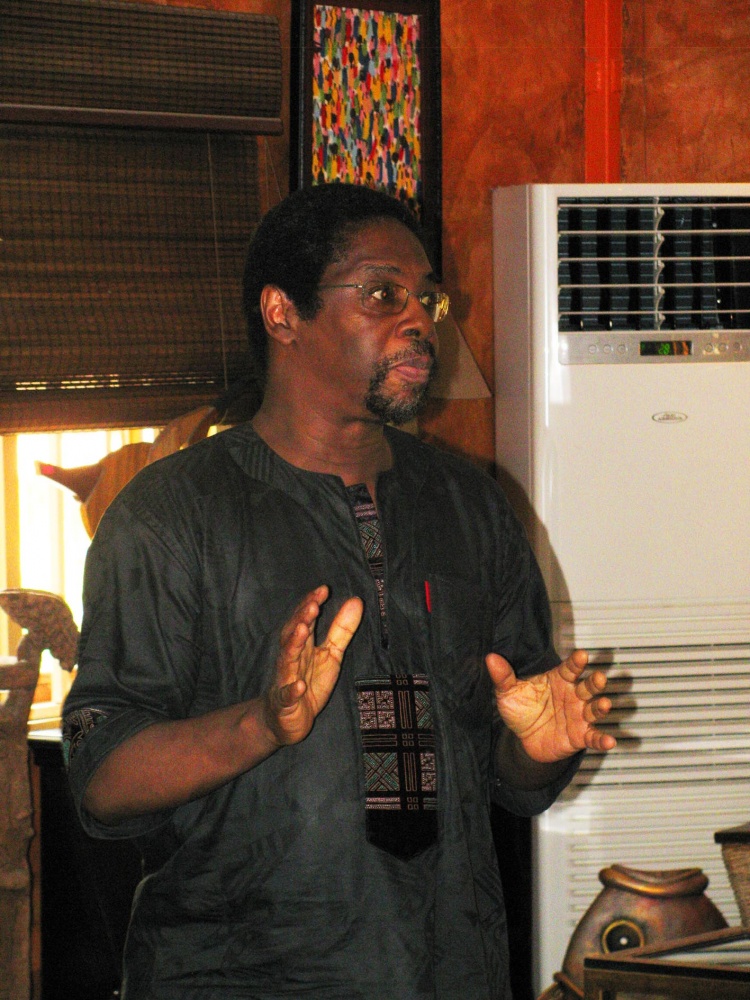The interim results of the research were shared and discussed at the Best Industry Practice event hosted by Accents and Art, an up and coming furniture design and manufacturing company in Accra, Ghana. The event brought together designers, architects, artisans and policy makers to discuss the transition from craft production to manufacturing and design production. In addition to G Up results, this event explored the transition from craft to industrial production and the challenges this brings.
The results of the G Up project were presented and discussed. The designers and artisans that we worked with gave us a fascinating insight to the real practicalities and perspectives of creative in West Africa. Within these we identified some key areas of attention for this and further research. These were
1. Cultural influences
2. Gender & innovation
3. Creative/innovation processes
4. New ideas & progress
Within these we identified some key themes that were giving the design and innovation ecosystem a particular flavor or characteristics that distinguished it from conventional European or North American models. A fuller description of these differences can be found in the PDF of the presentation of the outcome available to download here. In one example of distinctive practices, copying was found to be the norm rather than an exception. One shoemaker sais ‘When I check online, I download the design myself. Maybe I can go to the Versace site, I go to the Gucci site, I go to the Diesel site; when I download it, I sometimes add something to it. I sometimes also take stuff out’. This makes designers reluctant to be open with each other stifling the well established benefits of collaboration, iterative peer review and sharing resources.
We concluded the presentation with 4 key recommendations
1 Keep it distinctive: don’t try and replicate or be too inspired by European (or other) types of design or innovation.
2 Exploit digital and social media: our evidence suggests even those without reading skills are using social media for communication while designers and innovators are using it for marketing.
3 Collaborate, locally and internationally: Working with others can act as a value multiplier but this is challenging in a ‘copying’ culture/
4 Lower barriers for success: Our research found that there are barriers to females and others from making a full contribution to design and innovation .

